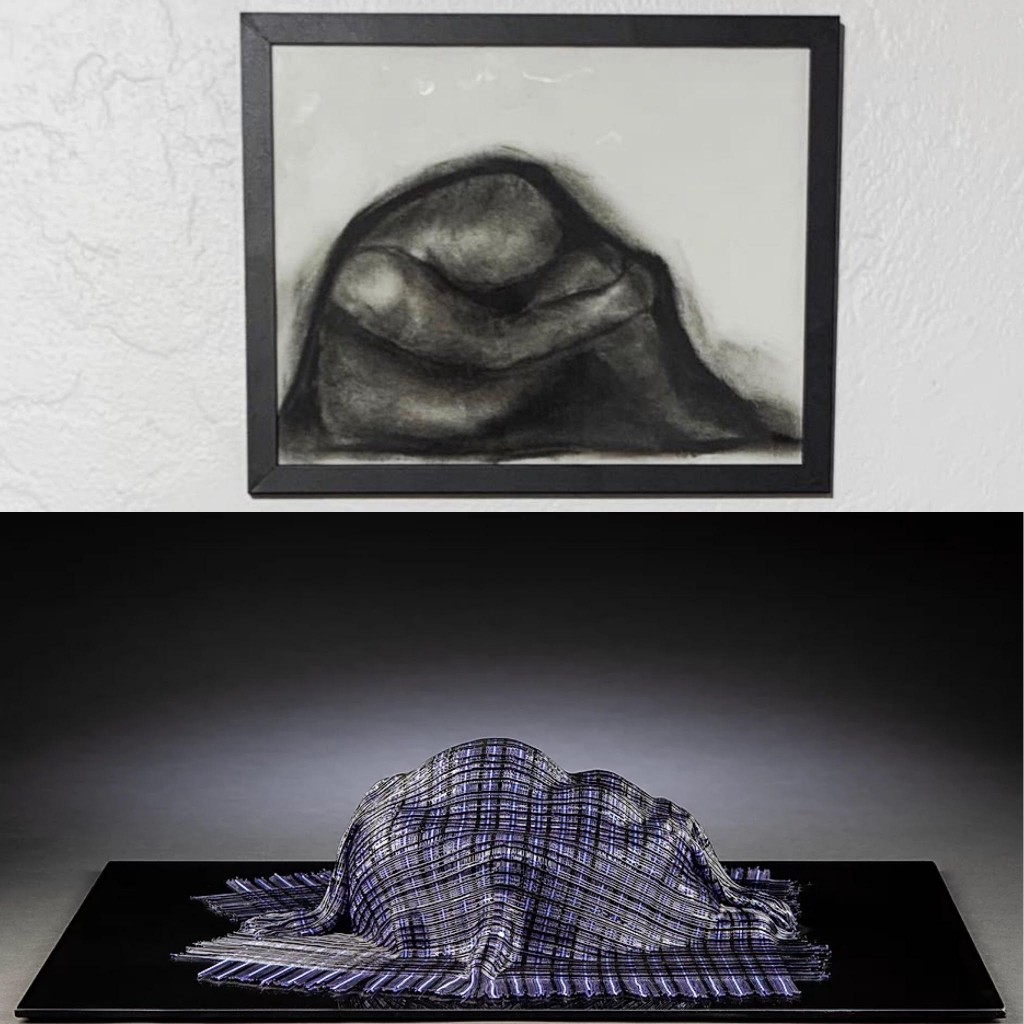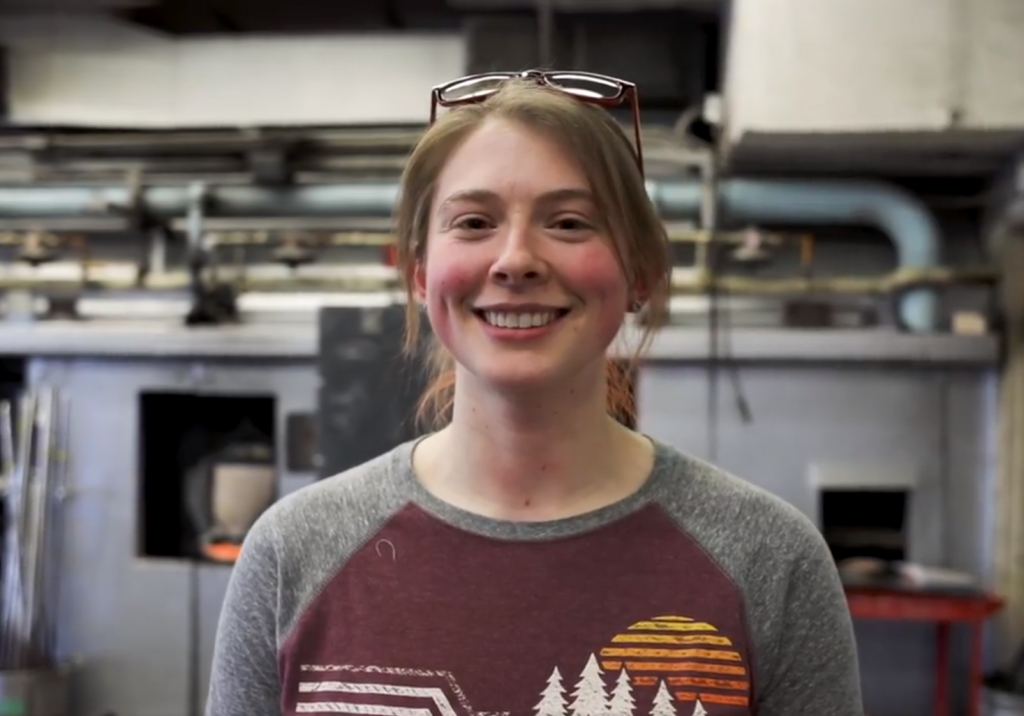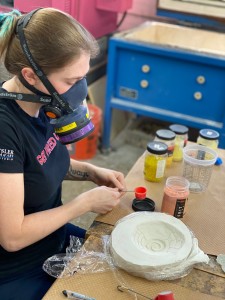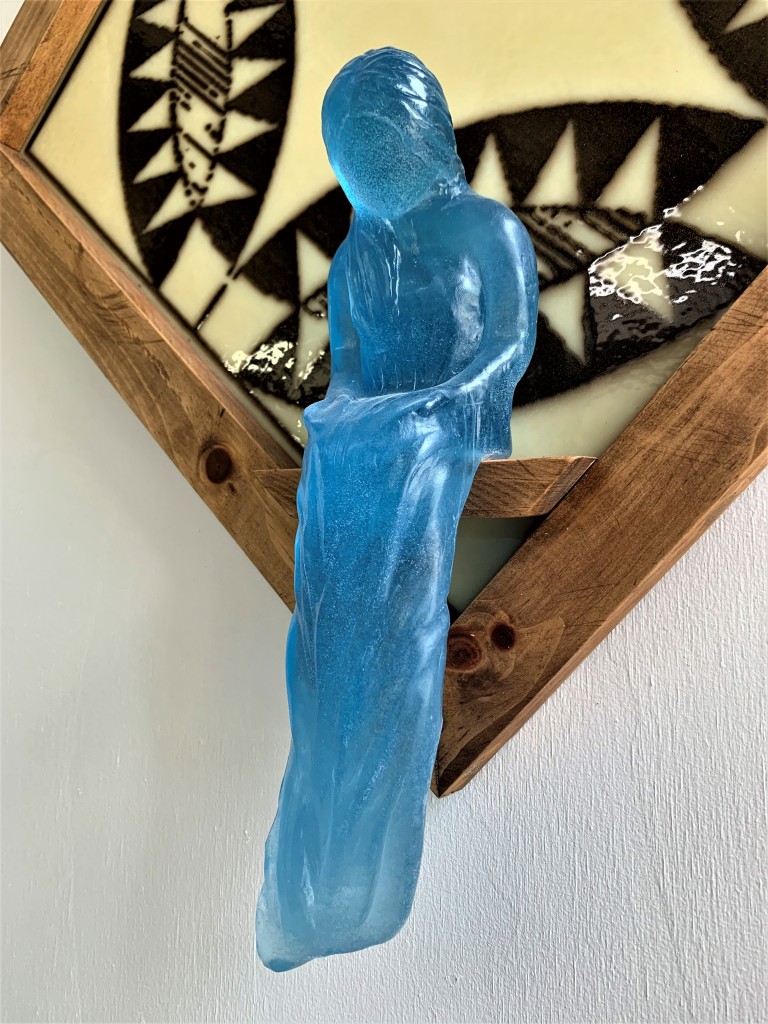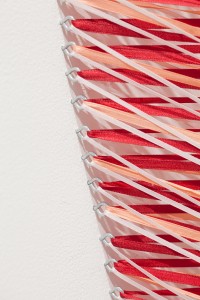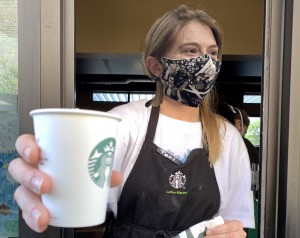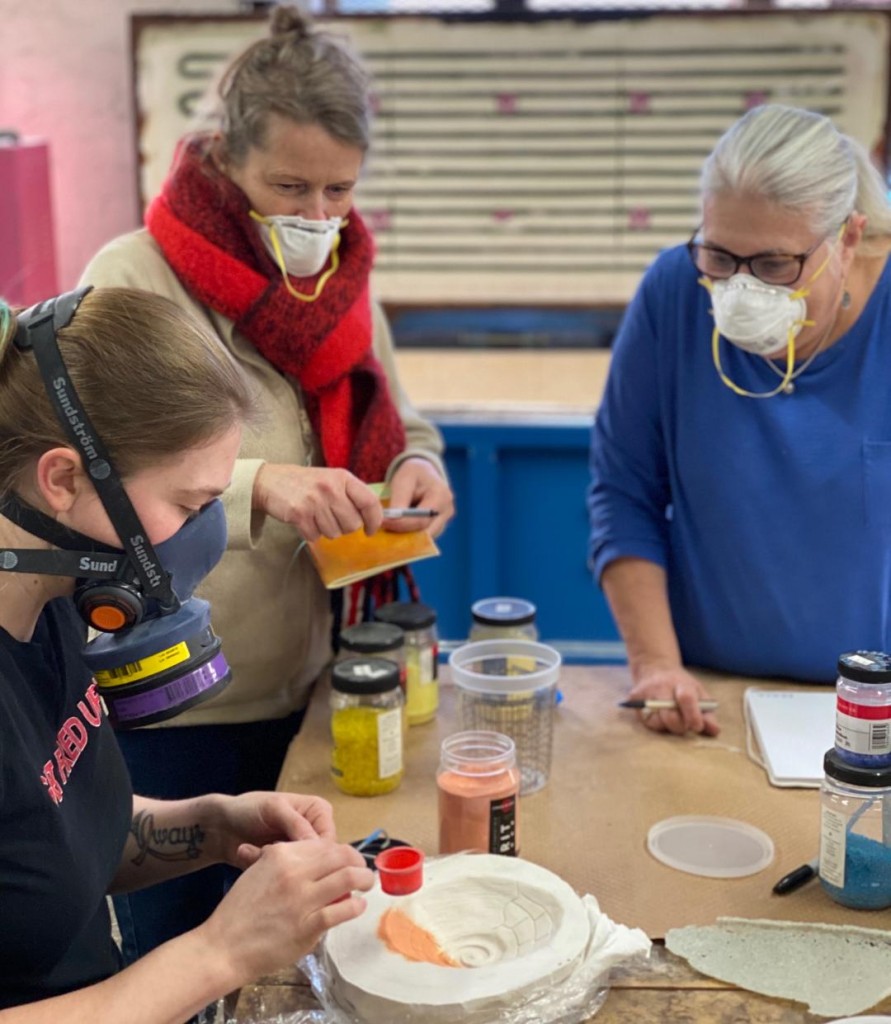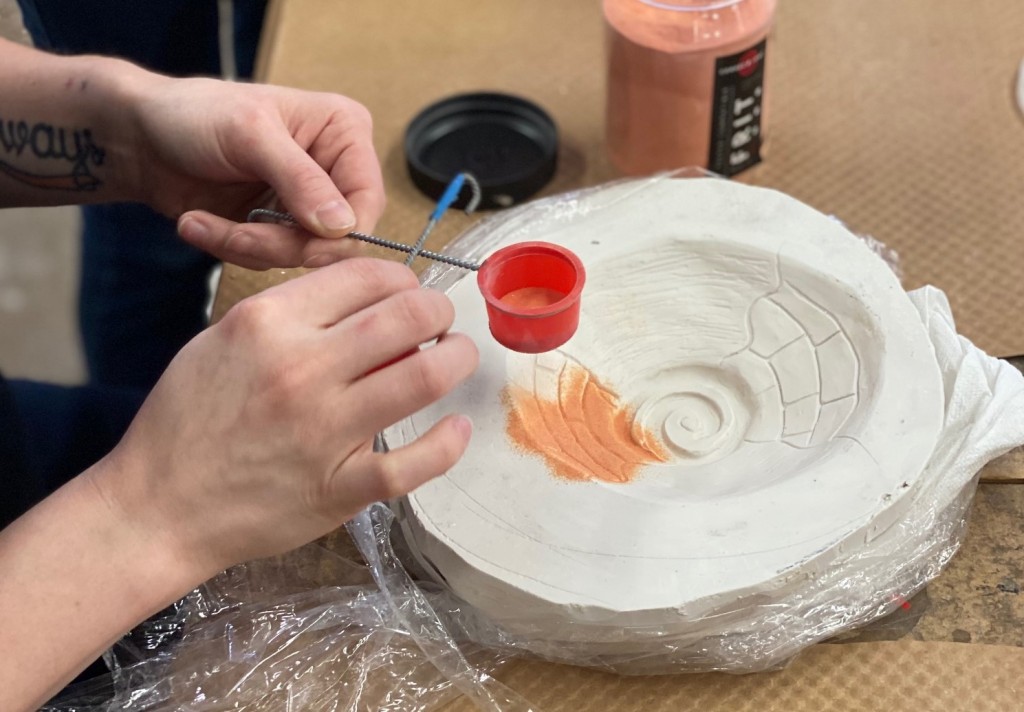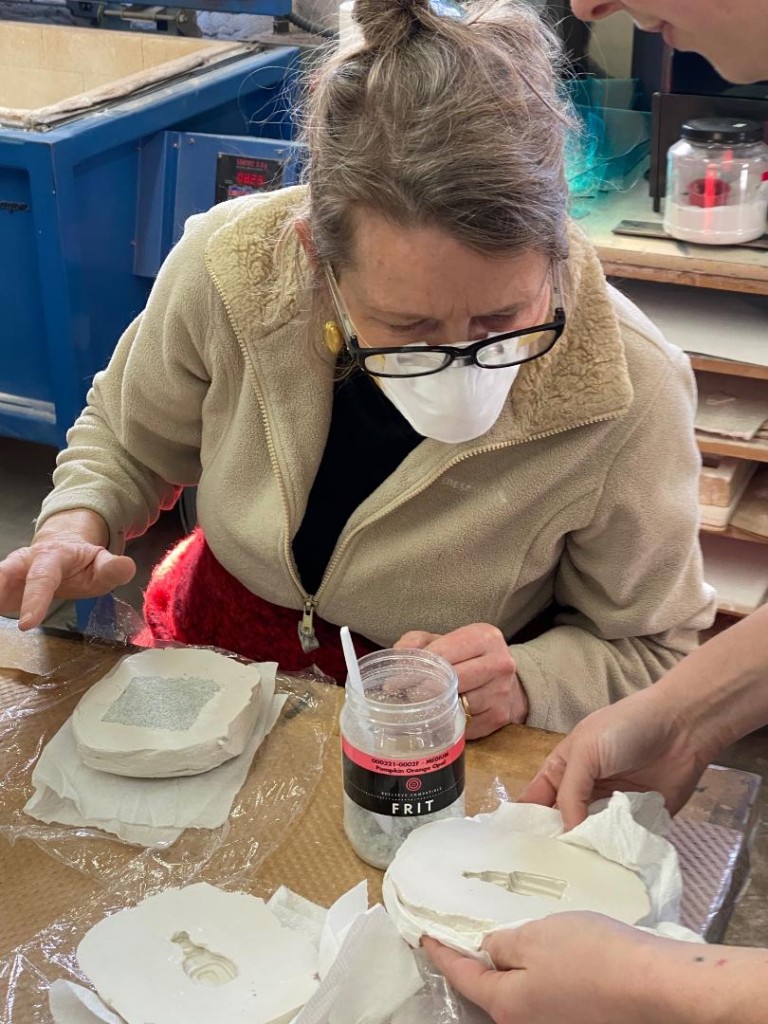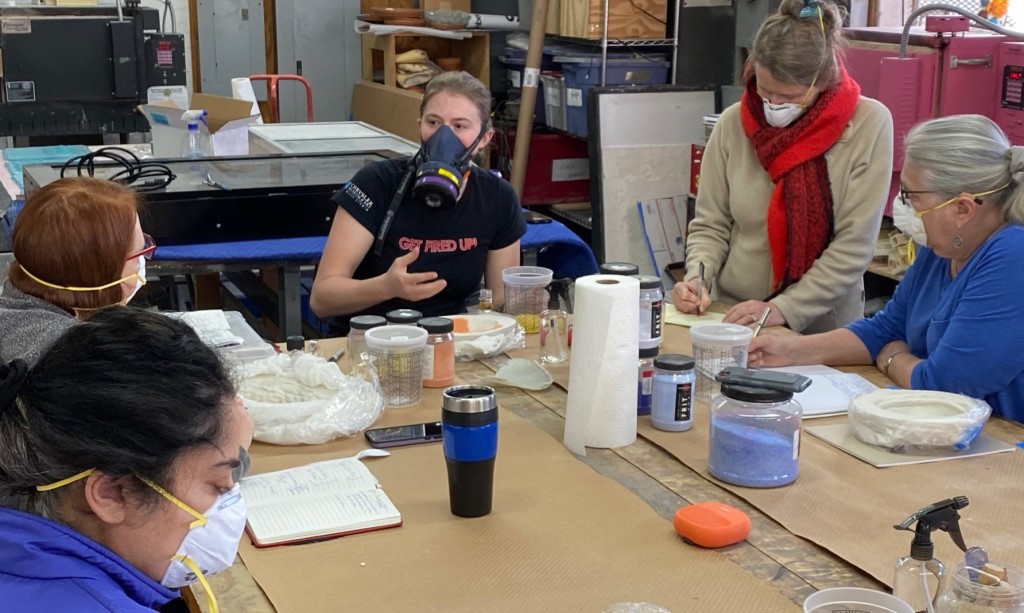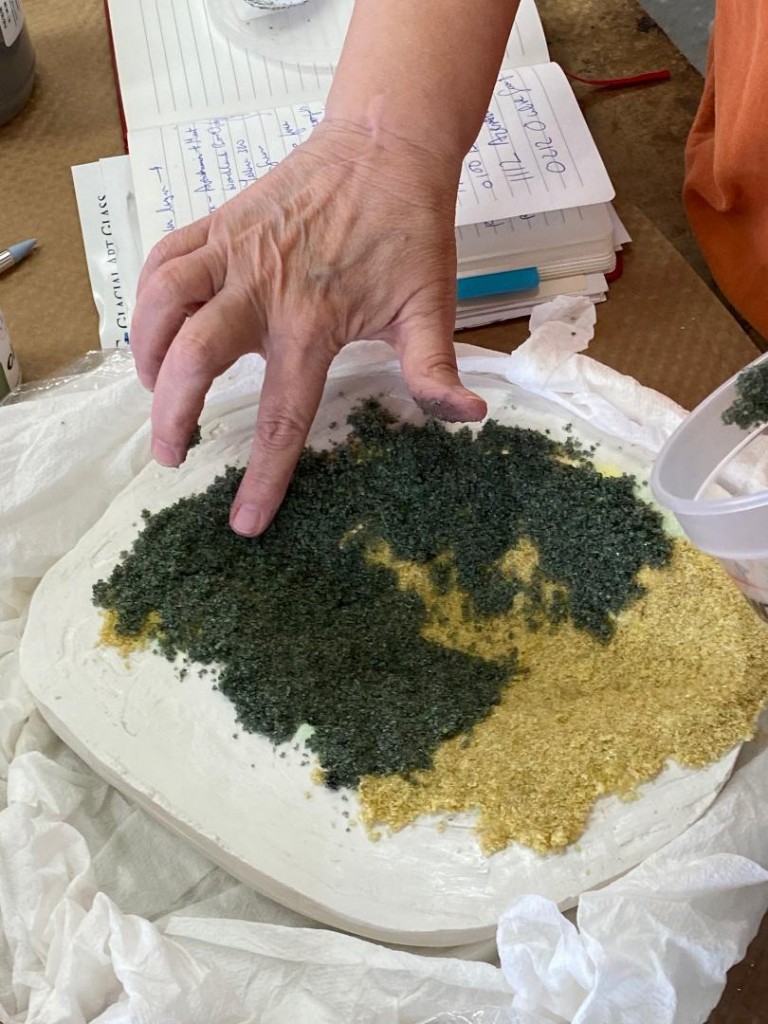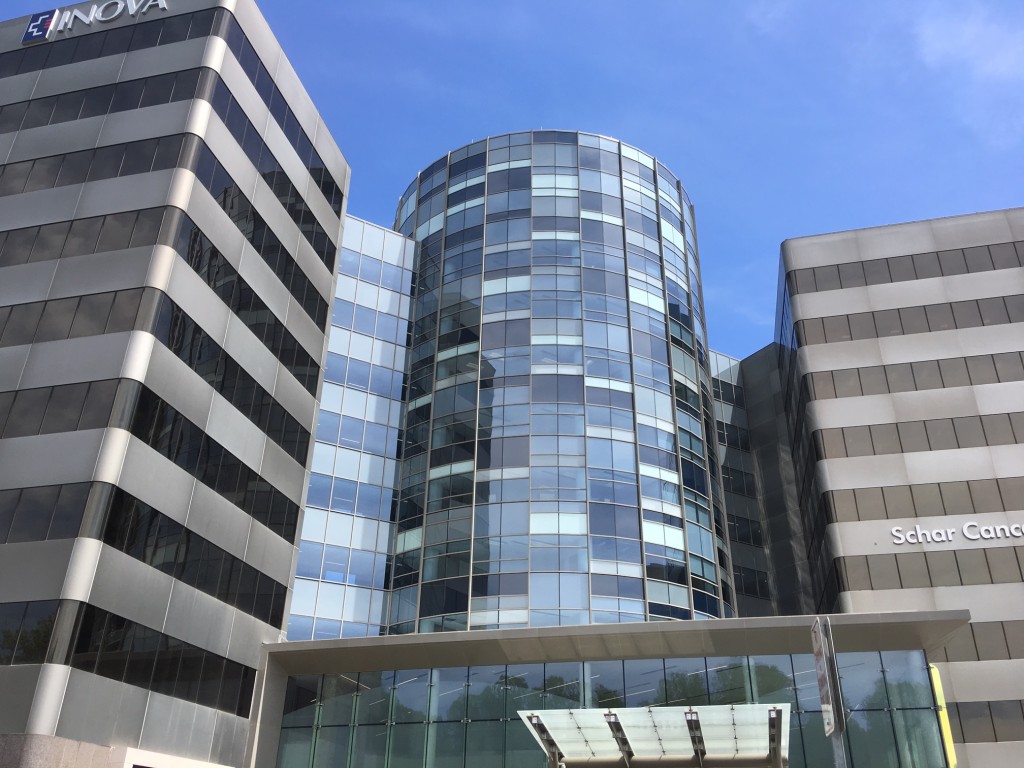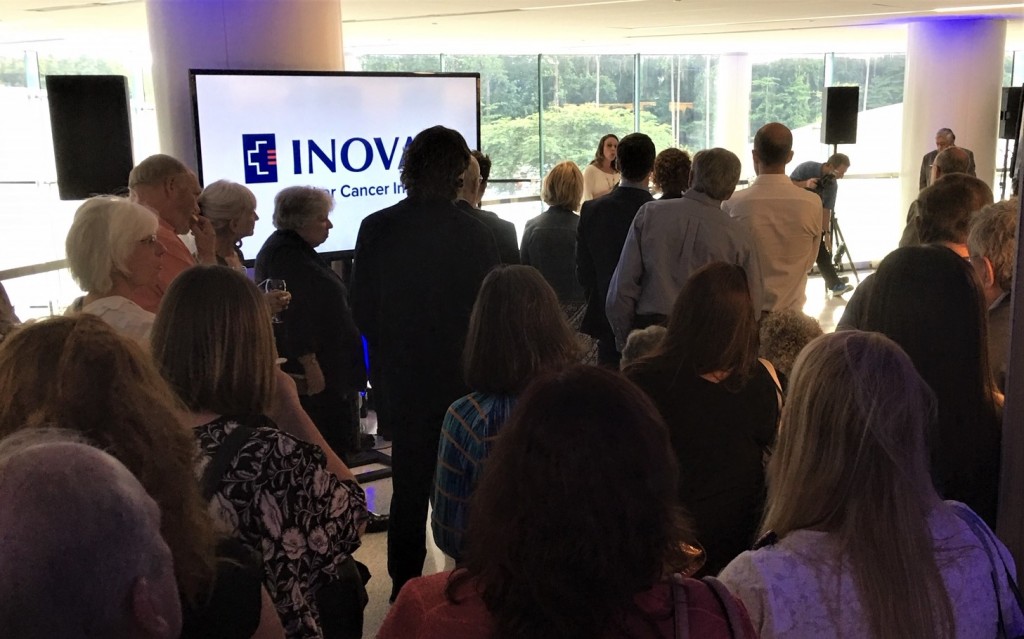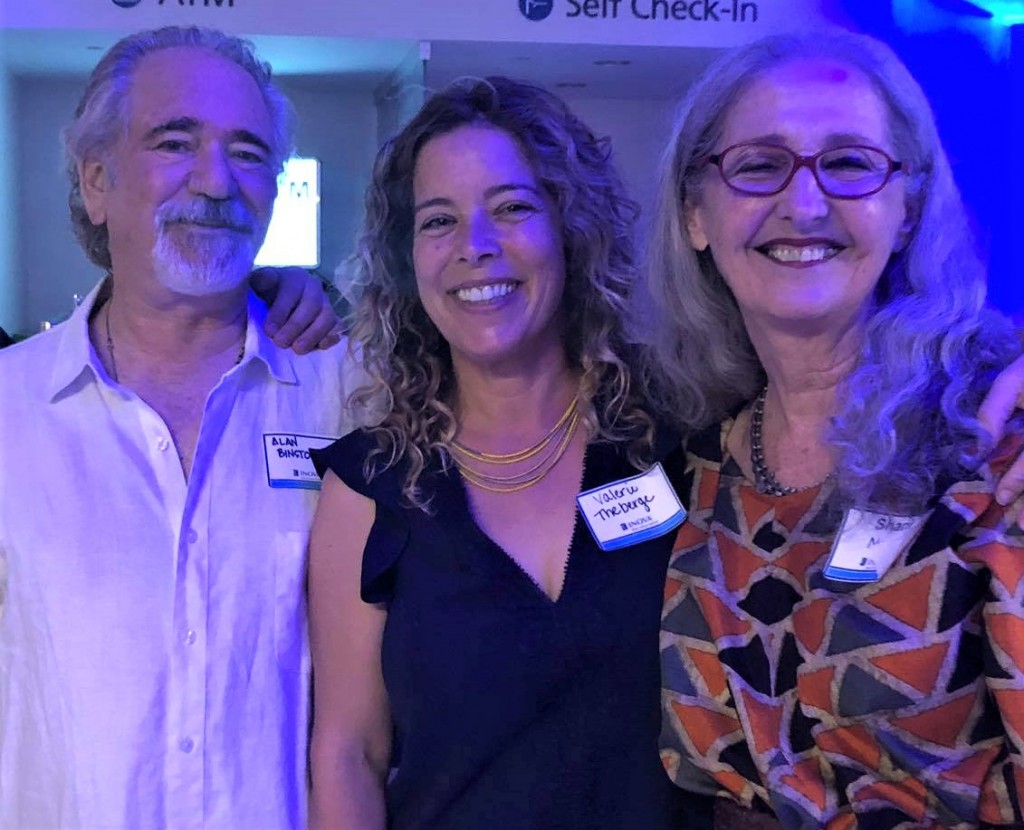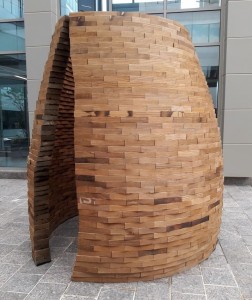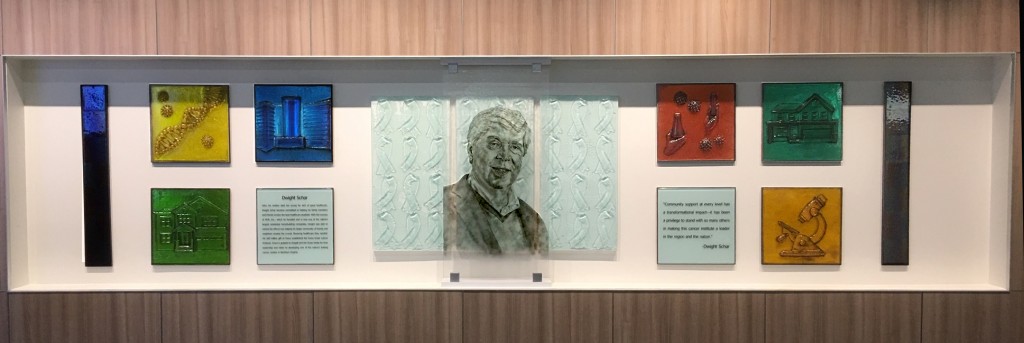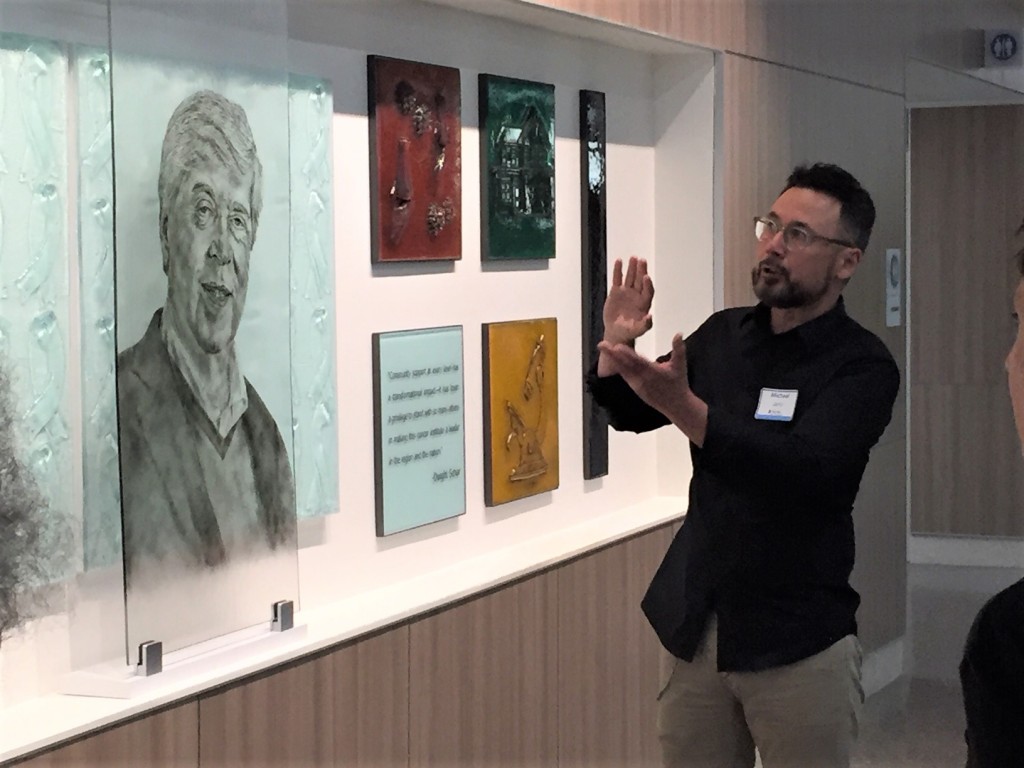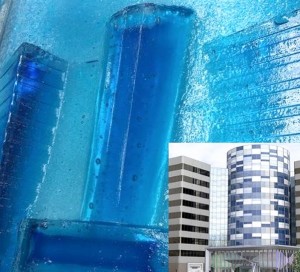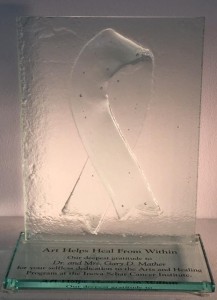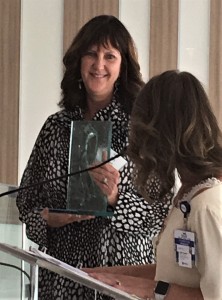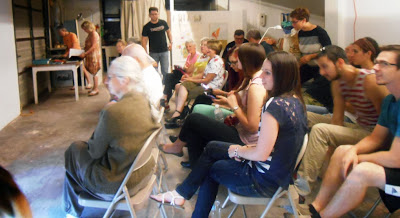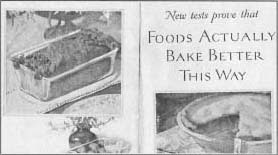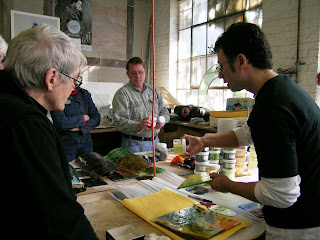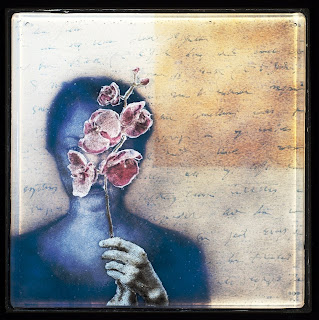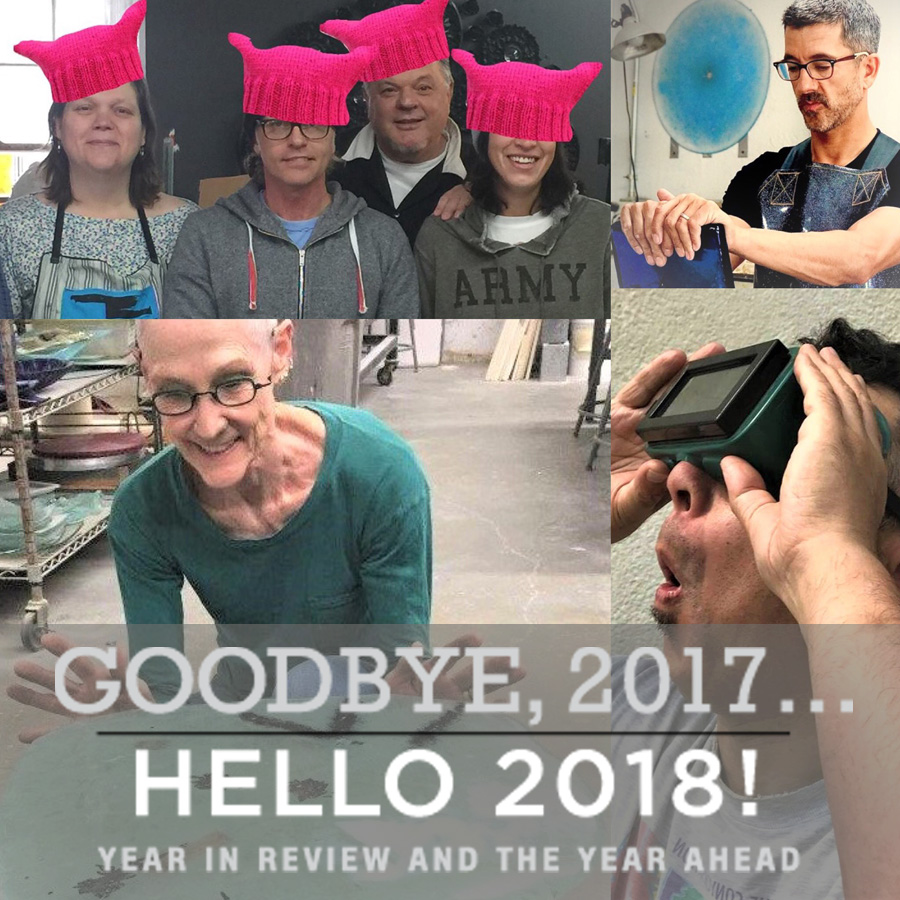
A look back at some of our biggest moments of the year and what we’re looking forward to in 2018. This year brought us the first year of Trump’s presidency, a historic solar eclipse and some huge exhibits. Now, as the year draws to a close, WGS blog reflects on some of the happenings that rocked – and to some degree reshaped our place in the glass art world.
January
The Women’s march held in Washington D.C. on Jan. 21, 2017 was organized after the election of Donald Trump as president of the U.S. to demonstrate solidarity among women, minorities, LGBT and other disenfranchised communities. Glass Art Magazine editor Shawn Waggoner visited the Washington Glass School while in town for the event.

Glass Art Magazine editor Shawn Waggoner (second from left) was one of the participants in the Women’s March in January.
WGS Instructor Debra Ruzinsky was named the new director of the Appalachian Center for Craft. The Appalachian Center for Craft is located in scenic Middle Tennessee near the town of Smithville. The facility was built in 1979 and has spacious studios, gallery, exhibitions, administrative offices, library, student housing and meeting/audio visual rooms.
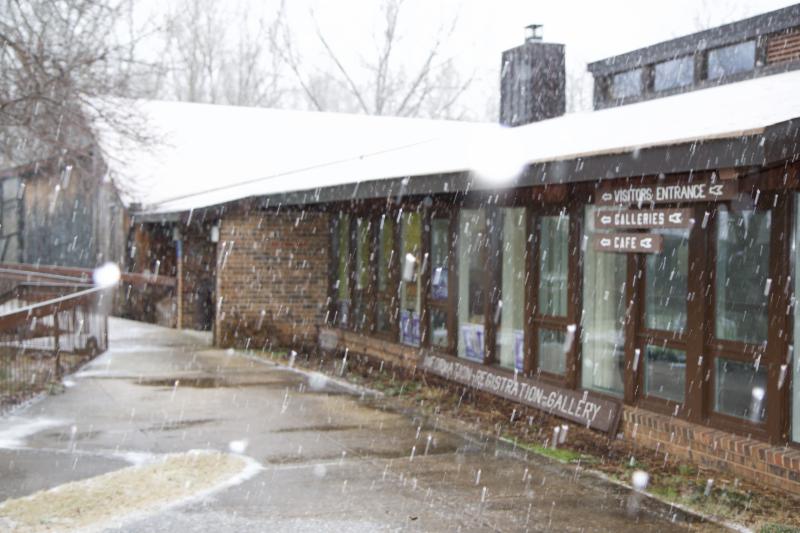
The Appalachian Center for Craft in Tennessee.
Glass Art Magazine featured our Michael Janis in a profiled in their magazine and as part of their podcast series “Talking Out Your Glass“.
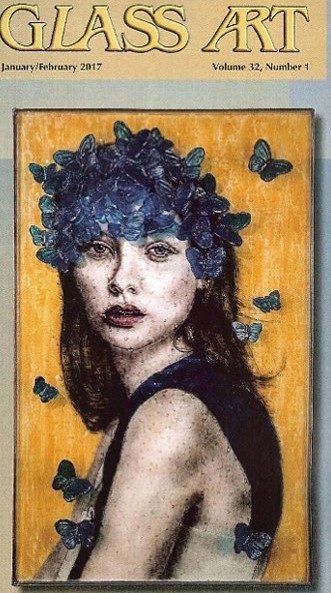
Glass Art Magazine featured Michael Janis in the Jan/Feb issue.
February
Washington Glass Studio completed installation of a two-part public art project in Florida. Palm Beach County‘s Art in Public Places awarded WGS the commission to design and fabricate integrated public art sculptures as part of the renovation of an existing facility for the new headquarters for Palm Beach County’s Tourist Development Council (TDC) and the Palm Beach County Sheriff’s Office (PBSO). The works were installed starting in January and completed in February 2017.
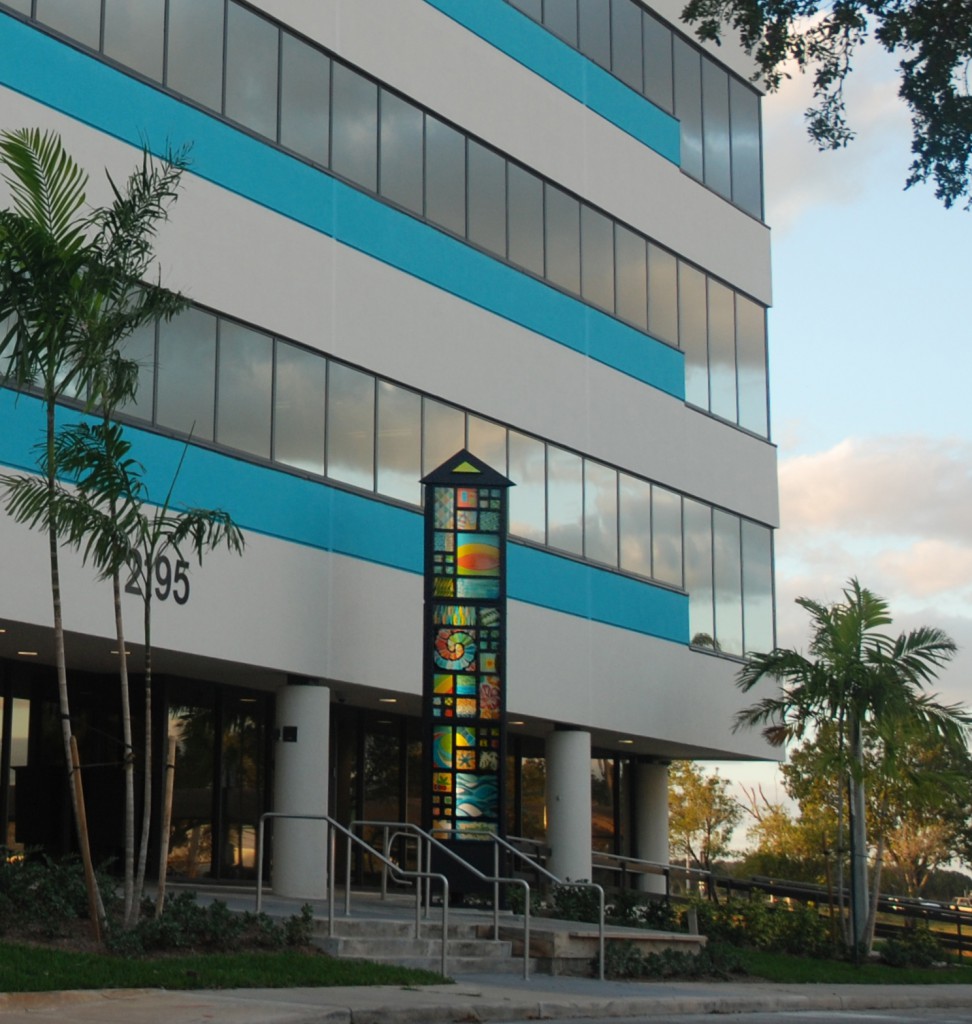
Public art at Florida’s West Palm Beach International Airport
March
March featured the opening of “Embracing Narrative” – the joint exhibition of glass works by artists from the Washington Glass School and the Virginia Glass Guild opened this weekend at Virginia’s Portsmouth Art & Cultural Center (PACC). Juried by Diane Wright, Curator of Glass, Chrysler Museum of Art and Sheila Giolitti, Mayer Fine Art Gallery, the exhibit kicked off the Glass Art Society’s (GAS) 46th annual conference that was held at the Chrysler Museum and the Perry Glass Studio in June, 2017. 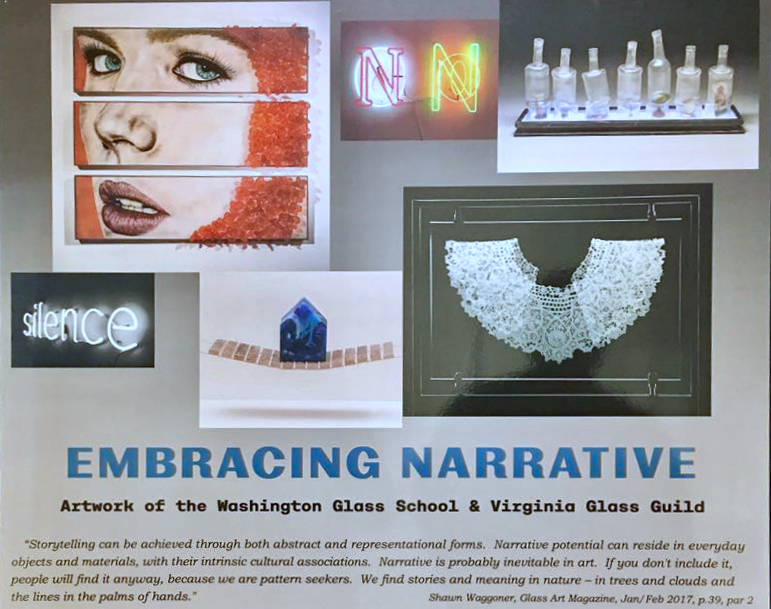
April
Virginia Museum of Contemporary Art (MOCA) invited WGS’ Michael Janis in April to the museum to talk about his artwork that was featured in the exhibit “Mindful: Exploring Mental Health Through Art”. He talked about his glass process and the themes that run thru his work. 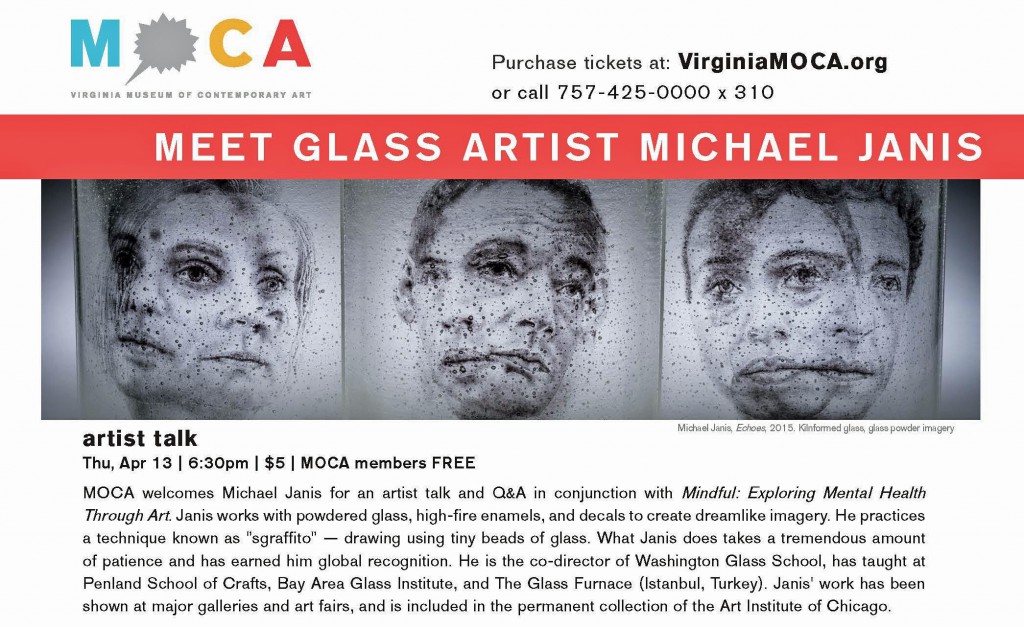
In April, Habatat Galleries featured works by Washington Glass School artists Erwin Timmers, Tim Tate, Michael Janis and Sean Hennessey at the gallery’s 45th Glass International Award Exhibition.
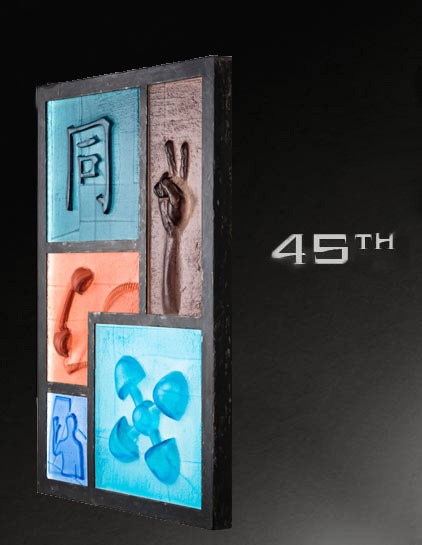
Erwin Timmers’ new cast glass and LED panels were featured at the 45th International.
May
Washington Glass School co-founder Tim Tate was invited by Glenn Adamson, senior scholar at Yale, to speak at a symposium at Yale University. Tim talked about his work, as well as artists Roberto Lugo and Stephanie Syjuco. Tim Tate talked about how objects differ from other types of evidence, when it comes to histories of ideology and belief.
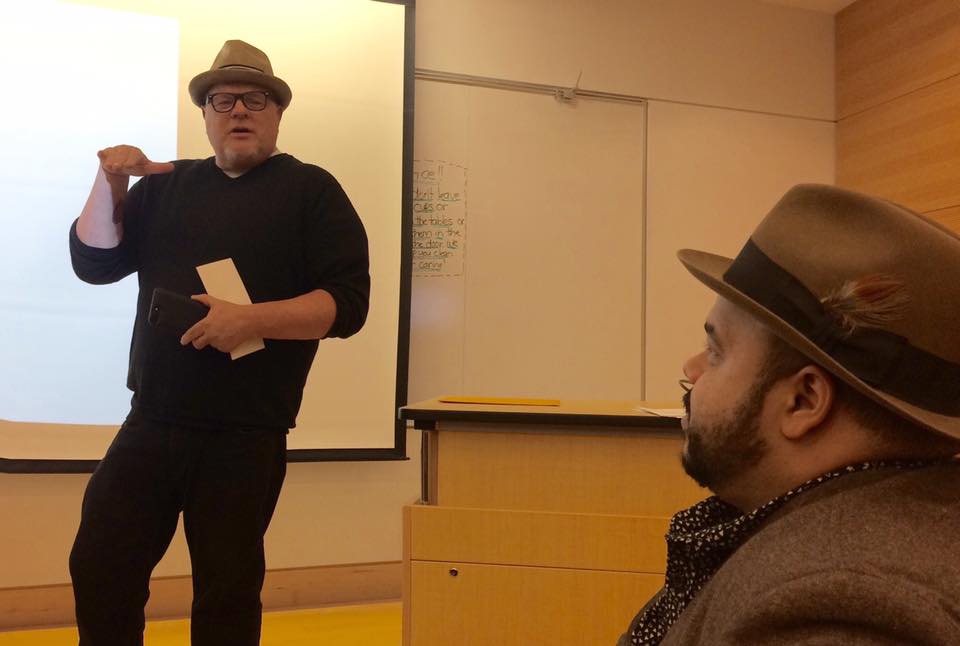
Tim Tate at Yale conference.
June
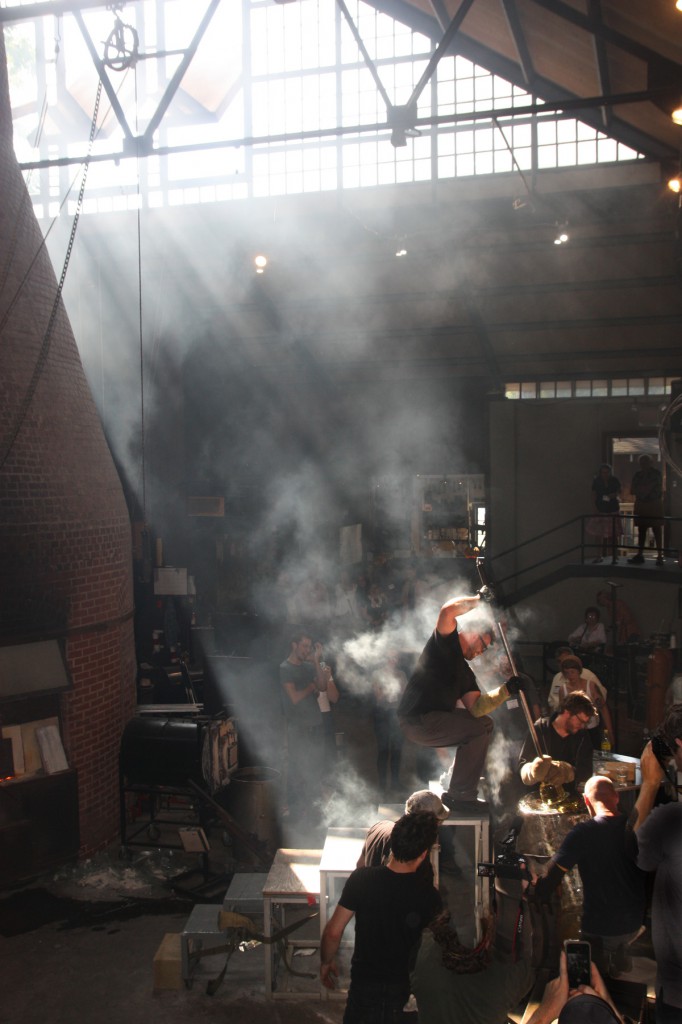
WheatonArts hot shop during Glass Weekend 2017
New Jersey’s WheatonArts opened GlassWeekend 2017– an International Symposium and Exhibition of Contemporary Glass. For 32 years, GlassWeekend brought together the world’s leading glass artists, collectors, galleries, and museum curators at Wheaton Arts and Cultural Center for a three-day weekend in June. This year’s demonstrating artists were Matthew Szosz, Rik Allen, and Shelley Muzylowski Allen. The keynote speaker featured Susie Silbert, the new Curator of Modern and Contemporary Glass at the Corning Museum of Glass.
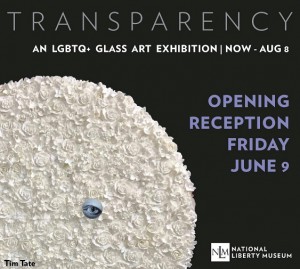
Tim Tate was one of the featured LBGTQ artists in the Liberty Museum show.
The National Liberty Museum hosted the nation’s first museum exhibit of studio glass works produced exclusively by artists of the LGBTQ+ community. Each artist explored diverse subjects, methods, and styles using the artistic medium of glass making.
July
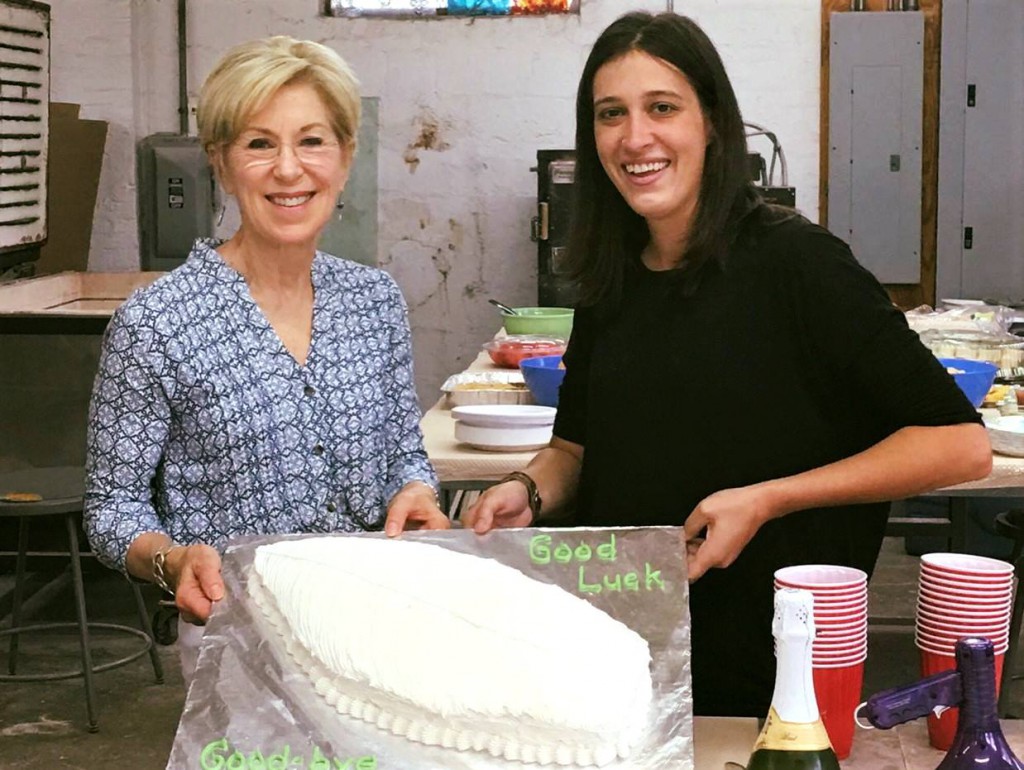
Teary-eyed farewell to our Ms Wilson – artist Trish Kent baked a farewell cake in the shape of Audrey’s favorite artistic element – a feather.
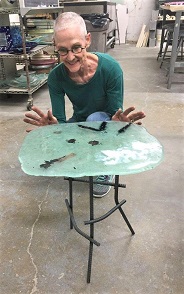
The glass table-making class was great fun!
Washington Glass School’s table making class ended with some happy artist/students! Erwin Timmers class made the glass for the tabletops and welded the steel for the table bases.
Audrey Wilson was recognized unstoppable force of nature! The Art Alliance for Contemporary Glass (AACG) awarded her with their Visionary Scholarship – with it, she was off to Penland for intensive workshops. Glass Art Magazine also featured Audrey with a great profile in the July/August issue! Ms Wilson had to say goodbye to WGS, as she began MFA classes at Ohio’s Kent State.
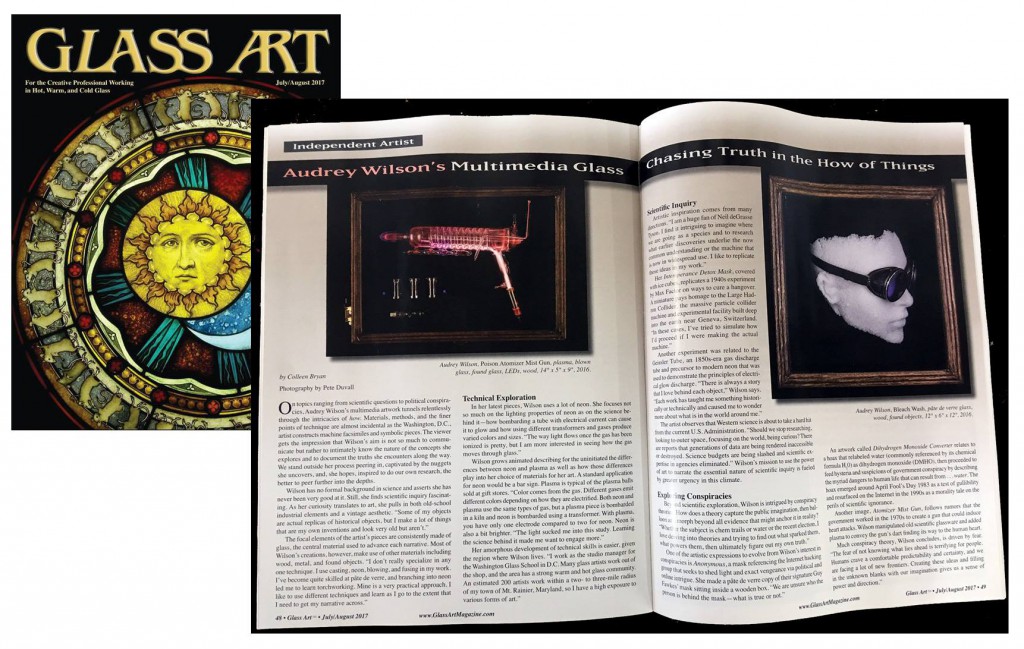
Glass Art Magazine featured Audrey Wilson in their July/August issue.
August
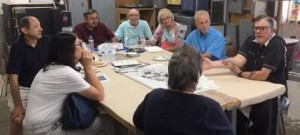
Tim Tate outlines the history of the American Studio Glass Movement to the class.
Baltimore’s Contemporary Glass Art class held at the CCBC visited the Washington Glass School as part of their studies. The group got to meet with many of the artists working from the studio, and were able to see how a school & studio functions.
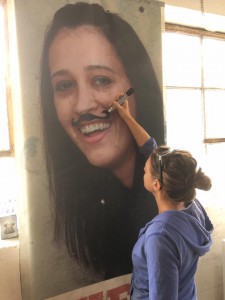
LBK gets to work making changes in the Glass School.
Laura Beth Konopinski joined the WGS crew as the new Studio Coordinator coming from the Pittsburgh Glass Center. LBK quickly updated our procedures and has taken over the workings of the busy studio. Ms Konopinski’s artwork has also been noticed, with her work being sought out for exhibition at the Miami Art Week.
“The Great American Eclipse” was the name given to the solar eclipse visible within a band across the entire contiguous United States, passing from the Pacific to the Atlantic coasts. WGS celebrated by having the community over to watch the event using the studio’s protective welding eyewear.
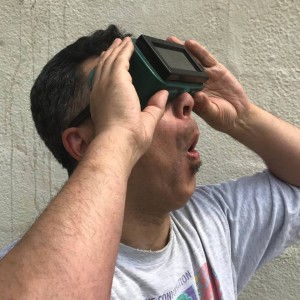
Said WGS Co-Director Michael Janis of the eclipse: “whoa”.
September
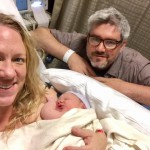 Artist Sean Hennessey became a proud papa, introducing his best work yet: Atlas Leif. Mazel tov!
Artist Sean Hennessey became a proud papa, introducing his best work yet: Atlas Leif. Mazel tov!
The James Renwick Alliance’s (JRA) annual Distinguished Artist Series (DAS) brings notable craft artists from around the country – and in September, the season started off great with Alex Bernstein as the distinguished artist in Glass. Alex took the JRA workshop attendees along a journey from billet to awesome in about 3 hours! The JRA Distinguished Artist walked the audience thru his signature process of “Bernstein-ing” his work, and everyone loved it!
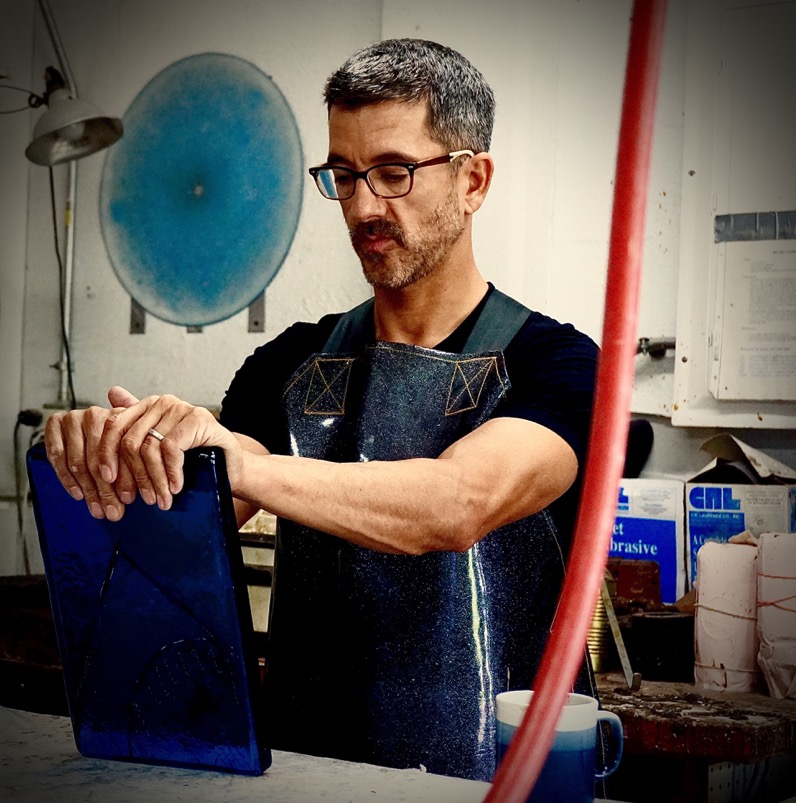
DAS Alex Bernstein begins his workshop demo at the Washington Glass School. photo by Diane Charnov
October
Washington Glass School said farewell to Studio Artist Veta Carney as she retired from her law practice and headed out west with her husband to join her son Daniel Carney’s glass studio in Arizona.
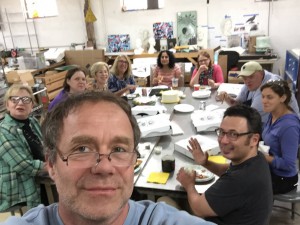
Changes at the Glass Studio are best addressed with food.
November
The Sculpture Objects Functional Art and Design (SOFA) Fair in Chicago this past November was focused on three-dimensional art and design. Artists Tim Tate and Michael Janis were shown at Habatat Galleries space at Chicago’s Navy Pier.
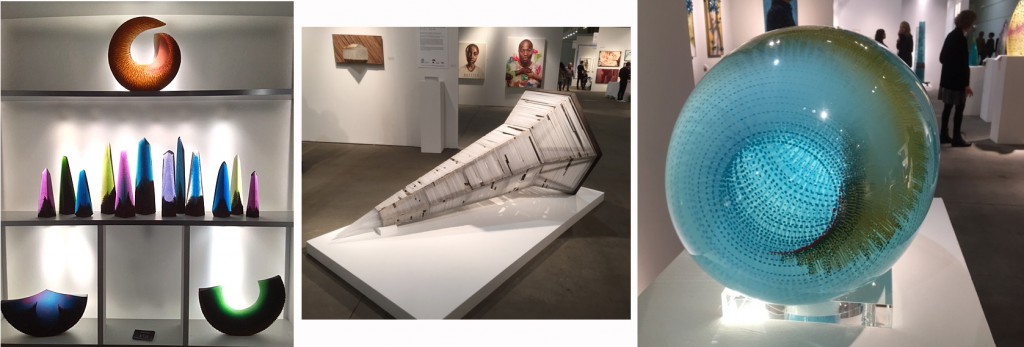
Seen in Chicago SOFA 2017 at Navy Pier
Also in November, the Washington Glass Studio installed the site specific commission for the William Beanes Community Center in Suitland, MD. The internally illuminated artwork was commissioned by Prince Georges County for the new community center named for William Beanes, MD, who played a pivotal role in the history of The Star-Spangled Banner.
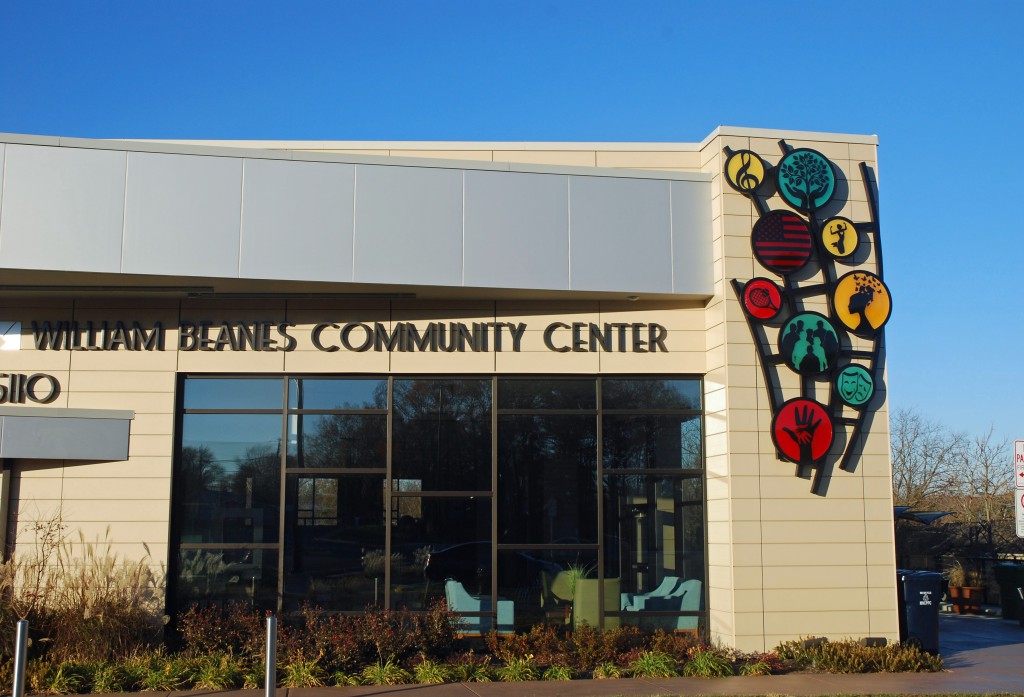
The William Beanes Community Center in Suitland, MD.
The images were designed and selected by the community after a series of interactive meetings and finalized with the help of local council members. The LED illuminated discs were mounted to a powder coated structure that was mounted to the building structure.
December
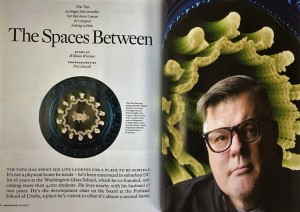
Tim Tate’s definitive profile by William Warmus in American Craft Magazine.
The December/January 2018 American Craft magazine issue features a story by author/critic William Warmus explores WGS co-founder Tim Tate’s history in the glass world. Titled “The Spaces Between“, William writes about what drives Tim’s work, and about the development (and controversy) of the Facebook “Glass Secessionism” page.

Miami Art Week 2017 featured works by WGS crew Michael Janis, Laura Beth Konopinsk, Tim Tate, Erwin Timmers & Alum Audrey Wilson.
December 2017 finished up with an amazing feat – ALL the principal staff of the Washington Glass School were featured as part of the worlds largest and most prestigious art fair – Art Basel/ Miami Art Week. The enormous art fair envelopes Miami and one cannot help but be inspired and encouraged.
Looking Ahead
2018 promises many new opportunities – looking ahead on the calendar:
New classes at the glass school! Michigan’s Habatat Galleries will again feature WGS artists in this year’s 46th International Glass Invitational in April. Michael Janis will be teaching an intensive session at Pittsburgh Glass Center in May. Tim Tate’s artwork will be part of the LA activist art show “Into Action!” curated by John Legend, Shepard Fairy, Rosario Dawson, Harry Belafonte and other notable activists, artists and museum curators. Never a dull moment!
Washington Glass School and Studio Wishes All the Best for the Holidays! May the New Year give wings to all of our dreams and let them come true in 2018!
